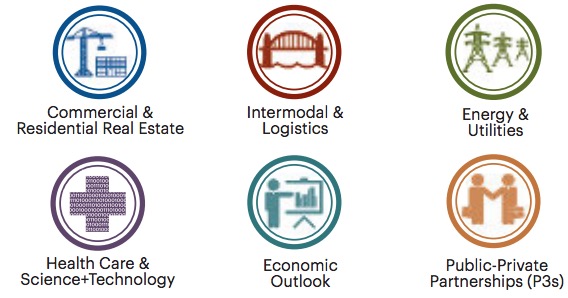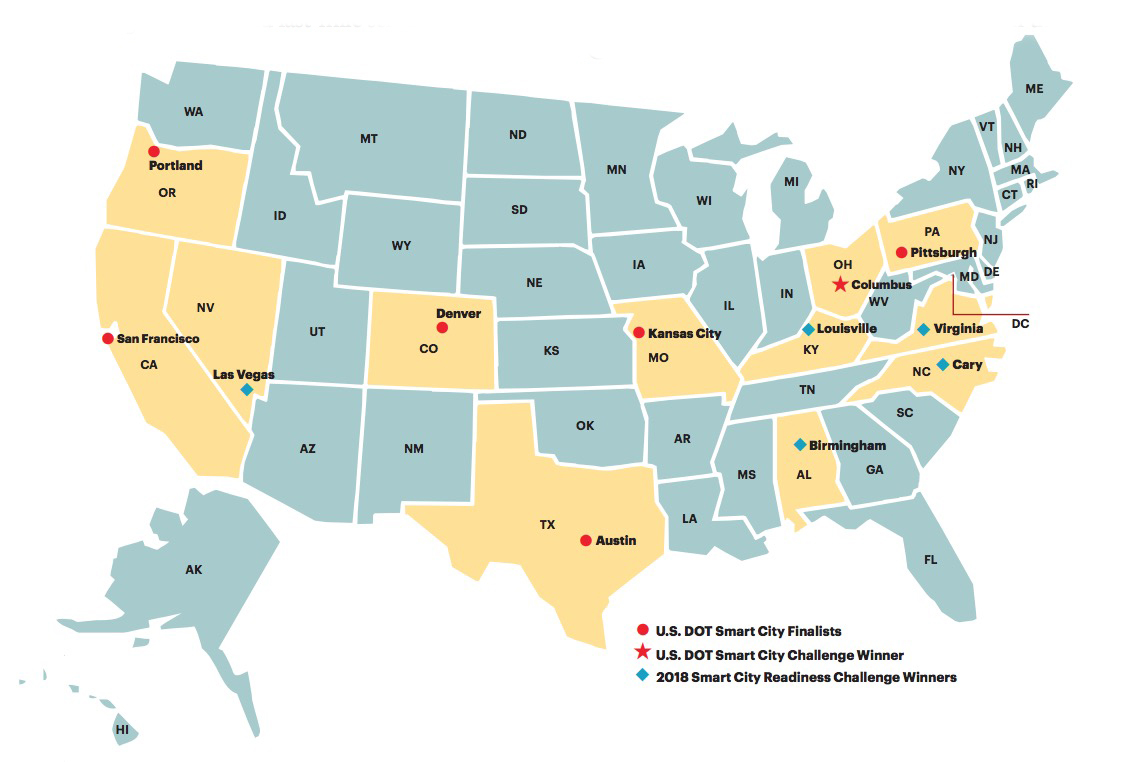AMERICAN COUNCIL OF ENGINEERING COMPANIES (ACEC)
New Engineering Inc. Column Highlights Private-Sector Markets
 This is the inaugural Private Side column in Engineering Inc. The Private Side will be a regular department of the magazine, focusing on the private-sector markets listed to the right, as well as providing information and insights regarding public-private partnerships and economic data relevant to the industry.
This is the inaugural Private Side column in Engineering Inc. The Private Side will be a regular department of the magazine, focusing on the private-sector markets listed to the right, as well as providing information and insights regarding public-private partnerships and economic data relevant to the industry.
For more on these topics, subscribe to ACEC’s bimonthly Private Industry Briefs: https://programs.acec.org/industrybrief/.
Cities Are Competing and Spending to Be ‘Smarter’
Written by Erin McLaughlin, ACEC’s senior director of private market resources.
With the continuous evolution of information and communications technology, cities are becoming smarter, with some pulling ahead as smarter than others due to strategic investments. According to a recent report by International Data Corp. (IDC), smart city technology spending is expected to hit $81 billion in 2018 and grow to $158 billion by 2022. IDC forecasts the focus of smart initiatives and spending will be intelligent traffic and transit as well as fixed visual surveillance, followed by smart outdoor lighting and environmental monitoring.
IDC’s projection aligns with the solutions the U.S. Department of Transportation (U.S. DOT) identified as priorities for cities participating in its Smart City Challenge, which kicked off in December 2015. The emphasis for smart city solutions continues to be on urban mobility, including:
- Providing first-mile and last-mile service for transit users;
- Coordinating data collection and analysis across systems and sectors;
- Reducing carbon emissions, therefore limiting the impact of climate change;
- Facilitating the movement of urban freight; and
- Optimizing traffic flow on congested roadways.
With smart city-related projects, the line is often blurred between what is private versus public, and what is a traditional engineering service versus a technology service or product. The result in this new world of designing smart infrastructure often involves different kinds of public-private partnerships that align engineering firms with technology firms, and public needs with private investment. Questions around data collection and privacy have arisen; however, opportunities around smart city infrastructure will continue to increase.
Is your city a “smart city”? Below is a map of the winner in addition to the seven finalists of the U.S. DOT Smart City Challenge, as well as the 2018 winners of the annual Readiness Challenge Grants from the Smart Cities Council.
Dallas-Fort Worth Reigns as Hottest Domestic Market
The Dallas-Fort Worth metropolitan area continues to garner attention as the hottest domestic commercial real estate market, according to the 2019 “Emerging Trends in Real Estate” by PwC and the Urban Land Institute (ULI). PwC/ULI ranked Dallas-Fort Worth No. 1 in the 2019 report for “Overall Real Estate Prospects.”
The metropolitan area’s success is attributed to strong population growth of those 44 and younger, which also correlates with strong labor market growth. According to Reonomy data, commercial real estate sales in Dallas-Fort Worth increased 119 percent between 2006 and 2016, with the largest property types being multifamily residential and office space; total sales of multifamily properties increased by 33.7 percent between 2012 and 2015. Although there is a technology-sector presence, Dallas-Fort Worth’s growth and economic success is largely due to it being home to many established Fortune 500 firms, such as American Airlines, Kimberly-Clark and Tenet Healthcare.
MOBs on an Inevitable Rise
One market is facing inevitable growth—the health care sector, specifically the need for medical office buildings (MOBs). The U.S. population age 65 and older will rise to more than 56 million people by 2020—growing at a rate 14 times that of the younger population— comprising 17 percent of the total population, according to Census projections. This age group visits doctors well above the rate of any other age group.
As a result, the health care industry is expected to add 150,000 practitioners over the next two years, according to the National Center for Health Statistics, and those health care professionals need space to work and meet with patients. Per MedScape, the typical space needed for an individual health care professional per office ranges from 1,000 to 1,500 square feet. Commercial real estate firm Transwestern estimates that this translates into demand for between 150.5 and 225.8 million square feet by 2019, and only 110 million square feet is expected to be available in either existing or under-construction space.
The top five markets where demand well exceeds supply include:
1. New York
2. Dallas-Fort Worth
3. Atlanta 4. Chicago
5. Houston
Download full article (PDF): Cities Are Competing and Spending to Be ‘Smarter’
Download full January/February issue of Engineering, Inc.
 About the American Council of Engineering Companies (ACEC)
About the American Council of Engineering Companies (ACEC)
www.acec.org
The American Council of Engineering Companies (ACEC) is the voice of America’s engineering industry. Council members – numbering more than 5,000 firms representing more than 500,000 employees throughout the country – are engaged in a wide range of engineering works that propel the nation’s economy, and enhance and safeguard America’s quality of life. These works allow Americans to drink clean water, enjoy a healthy life, take advantage of new technologies, and travel safely and efficiently. The Council’s mission is to contribute to America’s prosperity and welfare by advancing the business interests of member firms.
Tags: ACEC, American Council of Engineering Companies, Engineering Inc., Erin McLaughlin, Smart Cities, The Private Side







 RSS Feed
RSS Feed